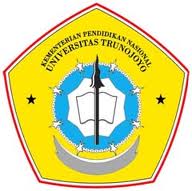Anda belum Log-in!
Silahkan Log in
Selamat Datang di Portal Digital Content Publisher
Minggu , 26 October 2025
Perpustakaan sebagai jantung pendidikan tinggi di Indonesia, harus mampu memberi kontribusi yang berarti bagi pelaksanaan proses belajar mengajar di perguruan tinggi.
di-posting oleh pada 2021-08-18 22:15:26 • 642 klik
Rancang Bangun Alat Pemotong ID Card Menggunakan Mikrokontroler Berbasis Android
Design and Build an ID Card Cutting Tool Using an Android-Based Microcontroller
disusun oleh LUTFI NURBAITI
| Subyek: | Pneumatic Bluetooth ID Card Mikrokontroler STM32 Android |
| Kata Kunci: | Pneumatic Bluetooth ID Card Mikrokontroler STM32 |
[ Anotasi Abstrak ]
Alat pemotong ID Card adalah salah satu alat yang digunakan di dalam dunia percetakan. Bahan yang digunakan untuk pembuatan ID Card percetakan biasa menyebutnya dengan nama PVC (Polivil Klorida). Dalam dunia percetakan untuk pemotongan ID Card yang dilakukan secara manual kurang efektif karena apabila banyaknya permintaan akan menyebabkan kelelahan dan akan mengganggu untuk terpenuhinya target permintaan. Tujuan penelitian adalah membuat alat pemotong ID Card lebih efektif dengan menggunakan mikrokontroler berbasis android. Pemotongan ID Card digerakkan oleh piston pada pneumatik silinder dengan memberikan tekanan yang berasal dari kompresor melalui regulator dan relay. Android digunakan sebagai input perintah ke alat pemotong yang dihubungkan melalui bluetooth H-05. Mikrokontroler STM32 berfungsi untuk memproses inputan perintah yang dikirim oleh android. Sensor optocoupler untuk mendeteksi adanya bahan yang akan dipotong. Sensor optocoupler bekerjasama dengan stepper dalam menentukan titik pemotongan PVC. Pengujian stepper didapatkan bahwa untuk satu milimeter dibutuhkan 210 step dalam putarannya. Pengujian pemotongan ID Card dilakukan pada ID Card dengan ketebalan 0,76 mm dengan spesifikasi alat pemotong dapat melakukan pemotongan dengan ketebalan maksimal 0,8 mm. Dari penelitian yang telah dilakukan pada pemotongan ID Card dengan 2 gap yang berbeda di dapatkan presentase keberhasilan sebesar 80%. Kata kunci : Pneumatic, Bluetooth, ID Card, Mikrokontroler STM32
Deskripsi Lain
ID Card cutting tool is one of the tools used in the printing world. The material used for making ID Card printing is usually called PVC (Polyvinyl Chloride). In the printing world, cutting ID Cards that are done manually is less effective because if there are many requests it will cause fatigue and will interfere with the fulfillment of the target demand. The purpose of the research is to make ID Card cutting tools more effective by using an android-based microcontroller. The cutting ID card is driven by a piston in a pneumatic cylinder by providing pressure from the compressor through a regulator and relay. Android is used as a command input to the cutting tool connected via Bluetooth H-05. STM32 microcontroller functions to process input command sent by android. Optocoupler sensor to detect the presence of material to be cut. The optocoupler sensor cooperates with the stepper in determining the cutting point of the PVC. The stepper test found that for one millimeter it takes 210 steps in its rotation. ID Card cutting testing is carried out on ID Cards with a thickness of 0.76 mm with a cutting tool specification that can make cuts with a maximum thickness of 0.8 mm. From the research that has been done on cutting ID cards with 2 different gaps, the percentage of success is 80%. Keywords : pneumatic, Bluetooth, ID Card, STM32 Microcontroller
| Kontributor | : ACHMAD UBAIDILLAH MS,S.T,M.T;MIFTACHUL ULUM,S.T,M.T |
| Tanggal tercipta | : 2021-07-14 |
| Jenis(Tipe) | : Text |
| Bentuk(Format) | |
| Bahasa | : Indonesia |
| Pengenal(Identifier) | : TRUNOJOYO-Tugas Akhir-21879 |
| No Koleksi | : 150431100067 |
Ketentuan (Rights) :
2021
 Download File Penyerta (khusus anggota terdaftar)
Download File Penyerta (khusus anggota terdaftar) 1. TRUNOJOYO-Tugas Akhir-21879-150431100067_Abstract.pdf - 106 KB
1. TRUNOJOYO-Tugas Akhir-21879-150431100067_Abstract.pdf - 106 KB 2. TRUNOJOYO-Tugas Akhir-21879-150431100067_Cover.pdf - 5720 KB
2. TRUNOJOYO-Tugas Akhir-21879-150431100067_Cover.pdf - 5720 KB 3. TRUNOJOYO-Tugas Akhir-21879-150431100067_Chapter1.pdf - 2166 KB
3. TRUNOJOYO-Tugas Akhir-21879-150431100067_Chapter1.pdf - 2166 KB 4. TRUNOJOYO-Tugas Akhir-21879-150431100067_Chapter2.pdf - 13194 KB
4. TRUNOJOYO-Tugas Akhir-21879-150431100067_Chapter2.pdf - 13194 KB 5. TRUNOJOYO-Tugas Akhir-21879-150431100067_Chapter3.pdf - 5947 KB
5. TRUNOJOYO-Tugas Akhir-21879-150431100067_Chapter3.pdf - 5947 KB 6. TRUNOJOYO-Tugas Akhir-21879-150431100067_Chapter4.pdf - 7512 KB
6. TRUNOJOYO-Tugas Akhir-21879-150431100067_Chapter4.pdf - 7512 KB 7. TRUNOJOYO-Tugas Akhir-21879-150431100067_Conclusion.pdf - 505 KB
7. TRUNOJOYO-Tugas Akhir-21879-150431100067_Conclusion.pdf - 505 KB 8. TRUNOJOYO-Tugas Akhir-21879-150431100067_Reference.pdf - 1573 KB
8. TRUNOJOYO-Tugas Akhir-21879-150431100067_Reference.pdf - 1573 KB 9. TRUNOJOYO-Tugas Akhir-21879-150431100067_Appendices.pdf - 4013 KB
9. TRUNOJOYO-Tugas Akhir-21879-150431100067_Appendices.pdf - 4013 KB Dokumen sejenis...
Dokumen sejenis...Tidak ada !
 Dokumen yang bertautan...
Dokumen yang bertautan...- Implementasi Algoritma Enkripsi RSA Untuk Aplikasi Komunikasi Berbasis Teks Menggunakan Bluetooth Pada OS Android
- RANCANG BANGUN GAME MOBILE EDUKASI MATEMATIKA DENGAN MEMANFAATKAN LIBRARY ANDROID SPEECH
- Rancang Bangun Alat Pemotong ID Card Menggunakan Mikrokontroler Berbasis Android
- RANCANG BANGUN MESIN PRES KAOS MENGGUNAKAN MIKROKONTROLER BERBASIS ANDROID
- RANCANG BANGUN MESIN PRES VACUUM SEALER MENGGUNAKAN MIKROKONTROLER BERBASIS ANDROID
 Kembali ke Daftar
Kembali ke Daftar 